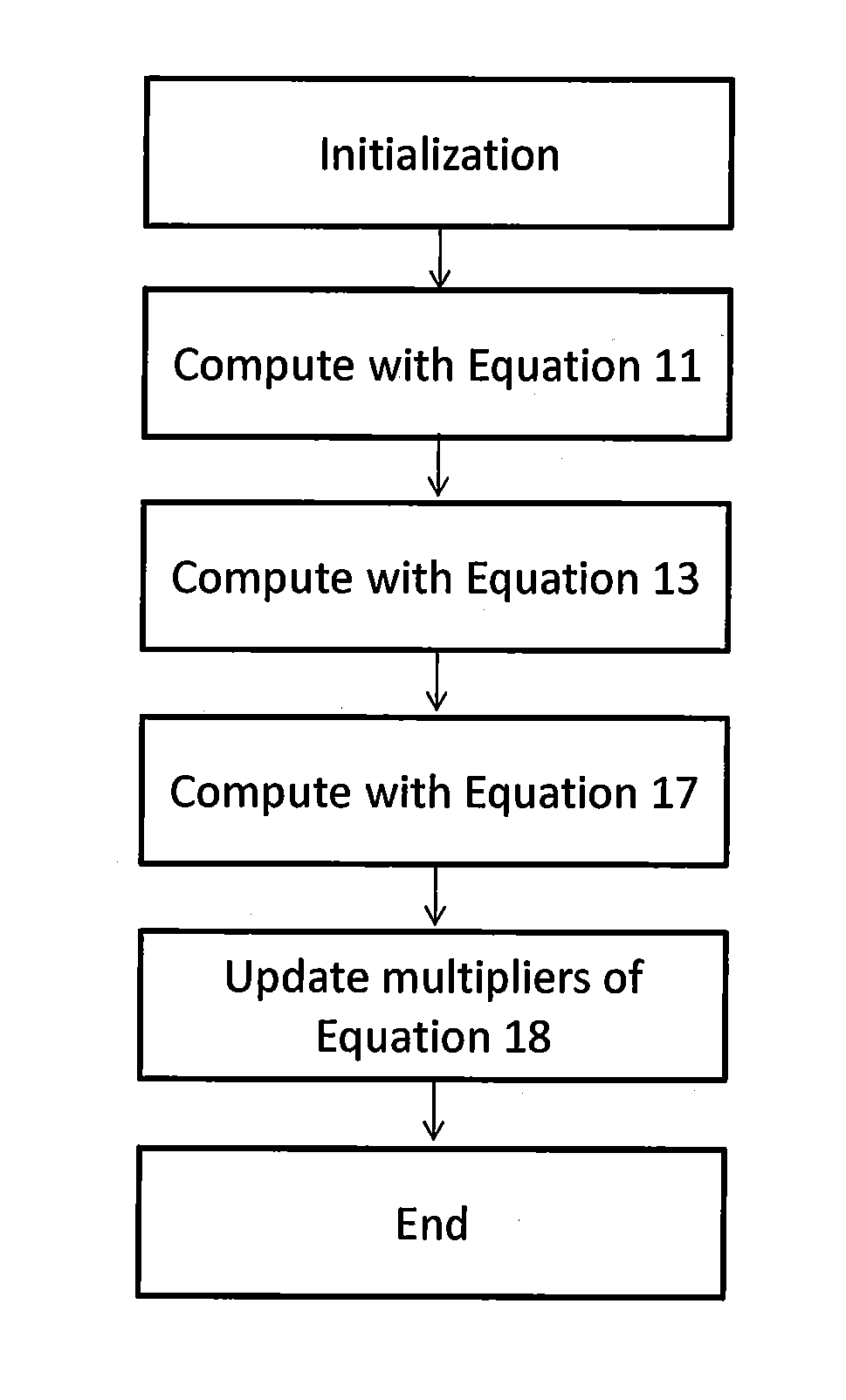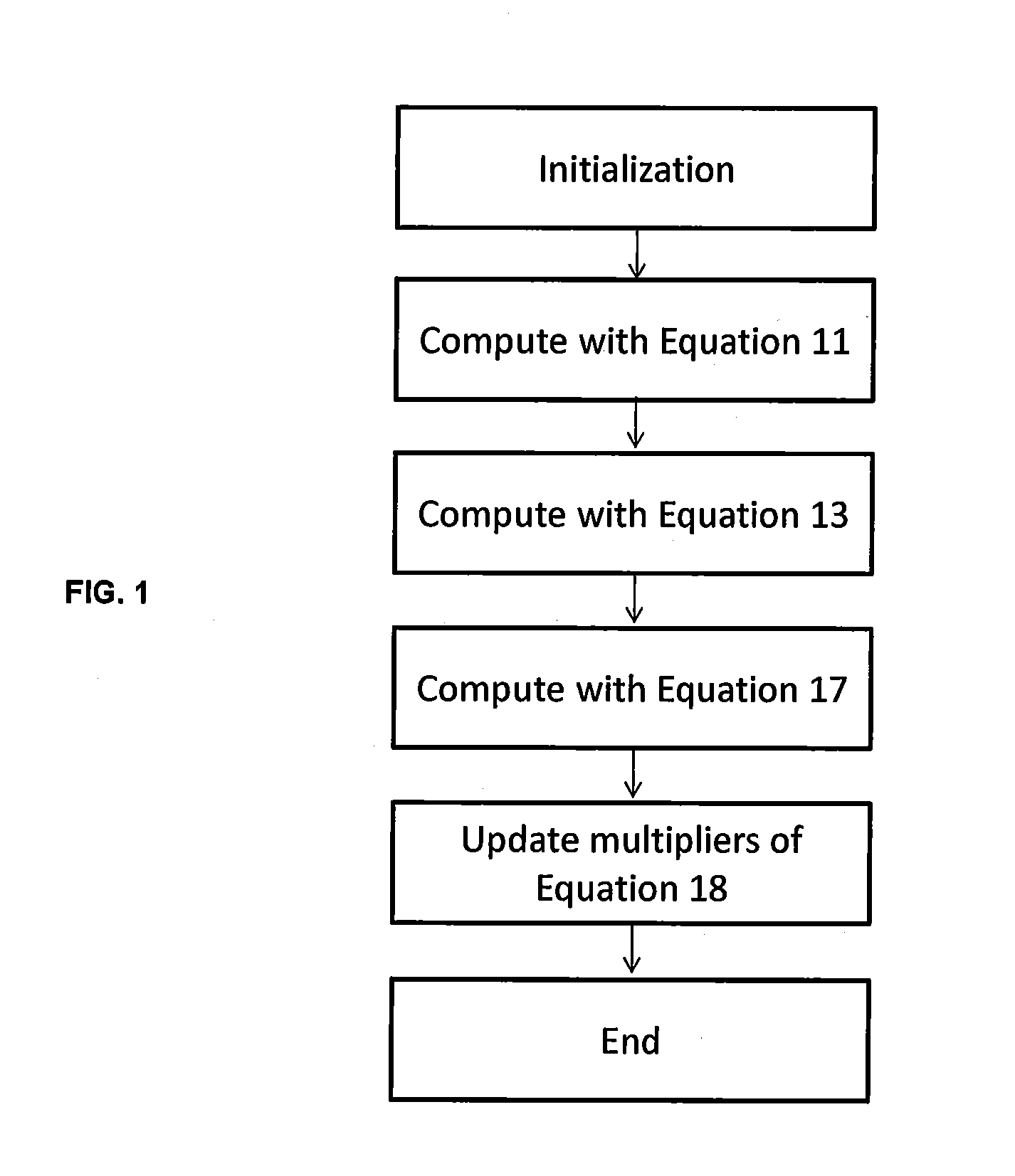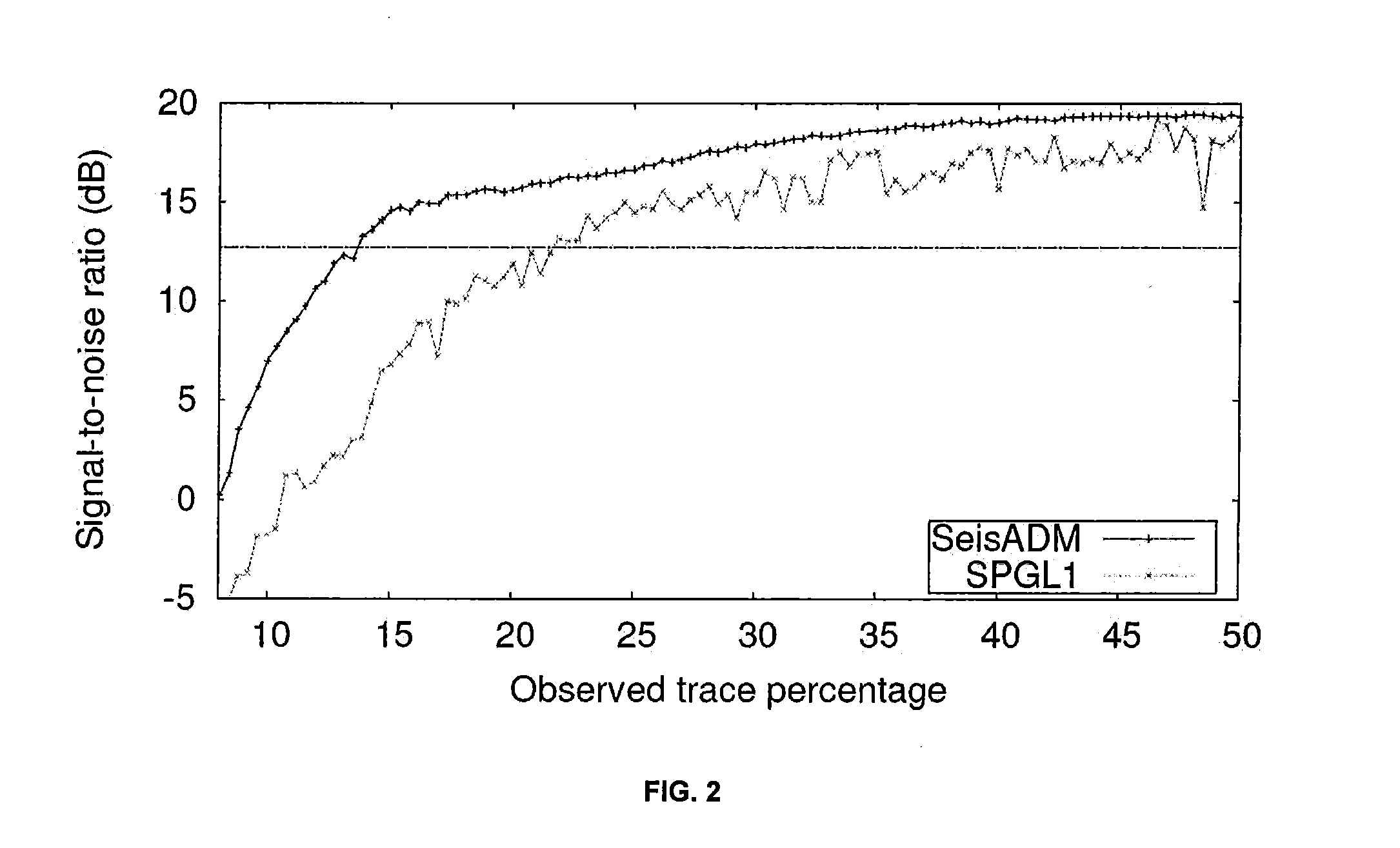Compressive sensing
- Summary
- Abstract
- Description
- Claims
- Application Information
AI Technical Summary
Benefits of technology
Problems solved by technology
Method used
Image
Examples
example 1
Data Reconstruction Model
[0034]For data reconstruction, a system is defined, wherein (Herrmann, 2010),
b=RS*x, x=Su, (1)
where b is observed seismic data, and u is reconstructed seismic data. Matrix R is a restriction (i.e. sampling) operator, mapping from the reconstructed seismic data to the observed seismic data. If S is an appropriately chosen dictionary, then x is a sparse representation of u. For most over-complete dictionaries, such as a wavelet, curvelet and windowed Fourier transforms,
S*S=I (2)
Optimization Models
[0035]Given the over-complete linear system in equation 1, and observed data b, solution(s) to the reconstructed data u are computed. A frequently used approach from compressive sensing is to solve either basis pursuit (BP) optimization model for noise-free observed data,
minx∥x∥1 s.t. RS*x=b (3)
or the basis pursuit de-noising (BPDN) optimization model for noisy or imperfect observed data,
minx∥x∥1 s.t. ∥RS*x−b∥22≦σ (4)
where σ is a representative of the noise level ...
example 2
[0052]First, the grids used in this Example are defined: 1) the observed grid is an irregular grid on which seismic data are acquired (i.e. observed trace locations), 2) the nominal grid is a regular grid on which seismic data are reconstructed, and 3) the initial grid is a regular grid from which the observed grid is selected using, for example, a jittered sampling scheme.
[0053]Traditionally, it is assumed that the initial grid is identical to the nominal grid, and the observed grid lies on a random or jittered subset of the nominal grid. Under these settings, the model from Herrmann and Hennenfent (2008) may be utilized,
b=Ru, x=Su (18)
where b=[b1, . . . , bm]T are observed or acquired seismic data, and u=[u1, . . . , un]T (m ni and ui represents a seismic trace. The operator S is an appropriately chosen dictionary which makes Su sparse or approximately sparse, and R is a restriction / sampling operator which maps data from the nominal grid to the observed grid. Specifically, R is c...
example 3
[0070]This example finds the optimal sampling grid in a seismic data reconstruction problem. The seismic data reconstruction model can be described as (e.g. Herrmann, 2010),
b=Dx, D=RS*, x=Su (29)
where b are seismic data on the observed grid, and u are data on the reconstruction grid (i.e. the true data). The matrix R is a restriction (i.e. sampling) operator, and maps data from the reconstruction grid to the observed grid. If S is a suitably chosen, possibly over-complete, dictionary, then x will have small cardinality (i.e. l0-norm).
Compressive Sensing Optimization Model and Mutual Coherence
[0071]Given the under-determined system in equation 29 and the data b, the reconstructed seismic data u is found by solving an analysis-based basis pursuit denoising optimization model (e.g. Cand'es et al., 2008),
minu∥Su∥1 s.t. ∥Ru−b∥2≦σ (30)
[0072]There are many algorithms that can be employed to find the solution of the optimization model in equation 30. In this Example, a variant (Li et al.,...
PUM
 Login to View More
Login to View More Abstract
Description
Claims
Application Information
 Login to View More
Login to View More - R&D
- Intellectual Property
- Life Sciences
- Materials
- Tech Scout
- Unparalleled Data Quality
- Higher Quality Content
- 60% Fewer Hallucinations
Browse by: Latest US Patents, China's latest patents, Technical Efficacy Thesaurus, Application Domain, Technology Topic, Popular Technical Reports.
© 2025 PatSnap. All rights reserved.Legal|Privacy policy|Modern Slavery Act Transparency Statement|Sitemap|About US| Contact US: help@patsnap.com



